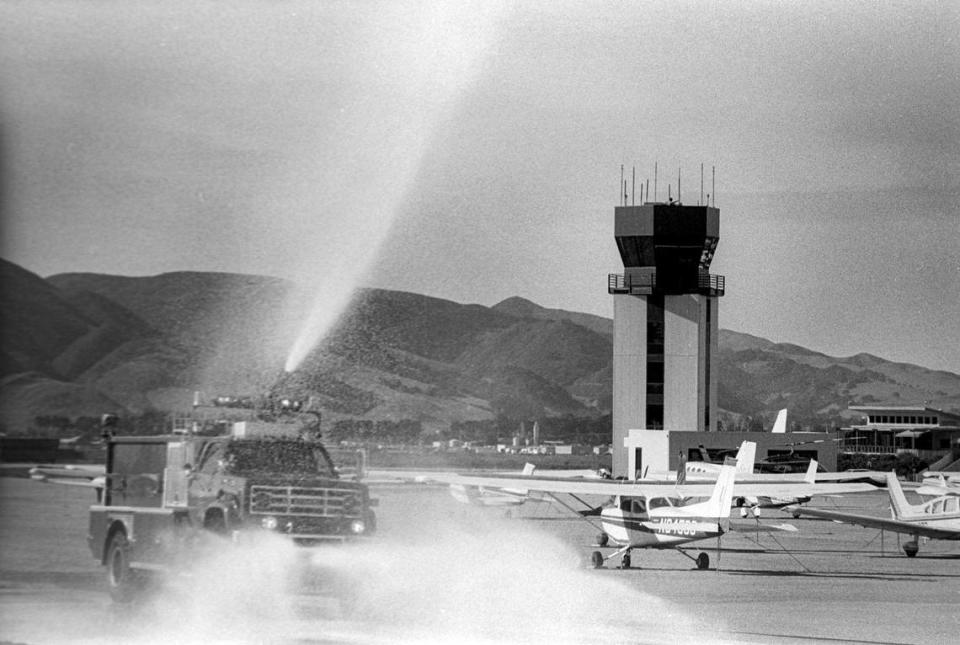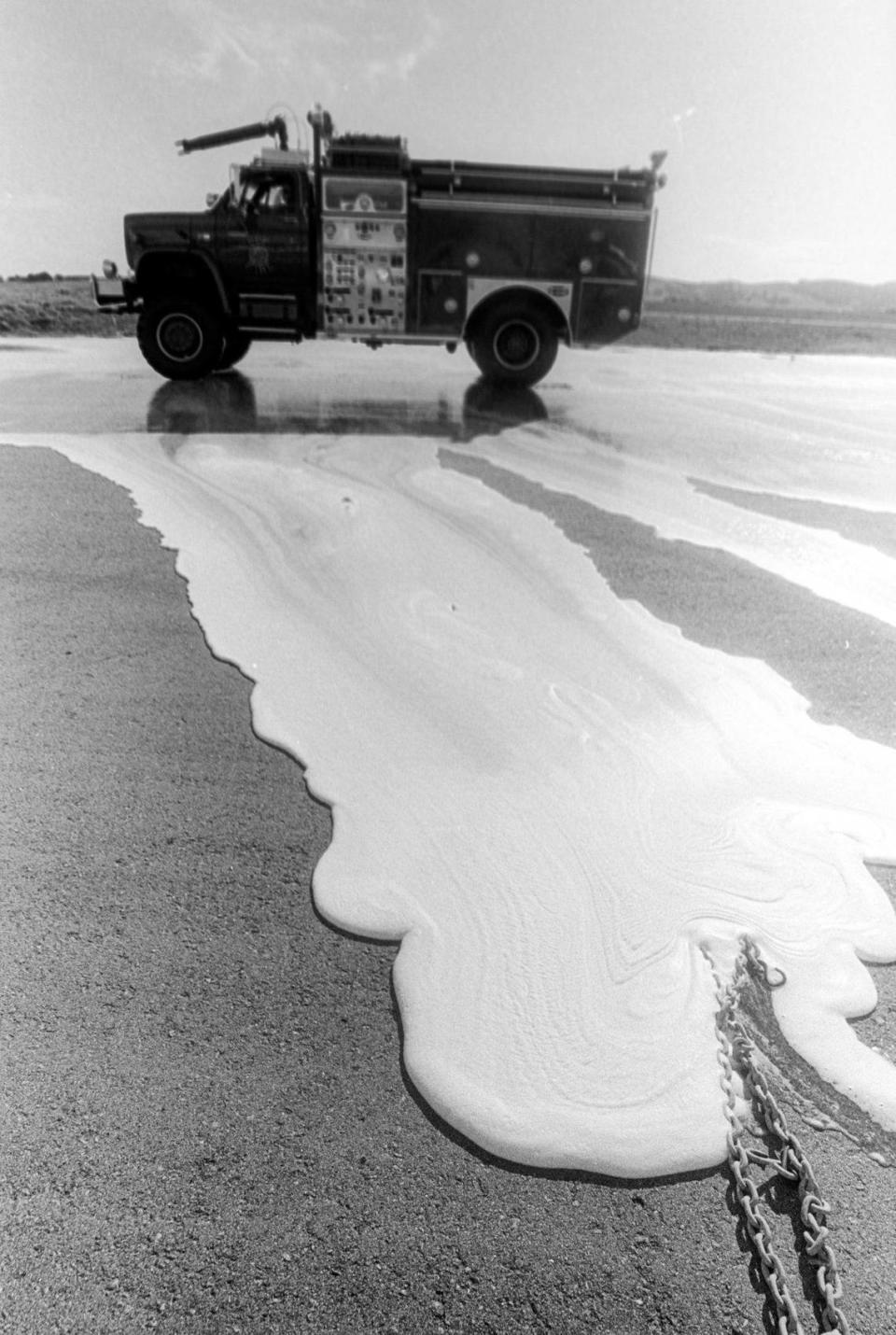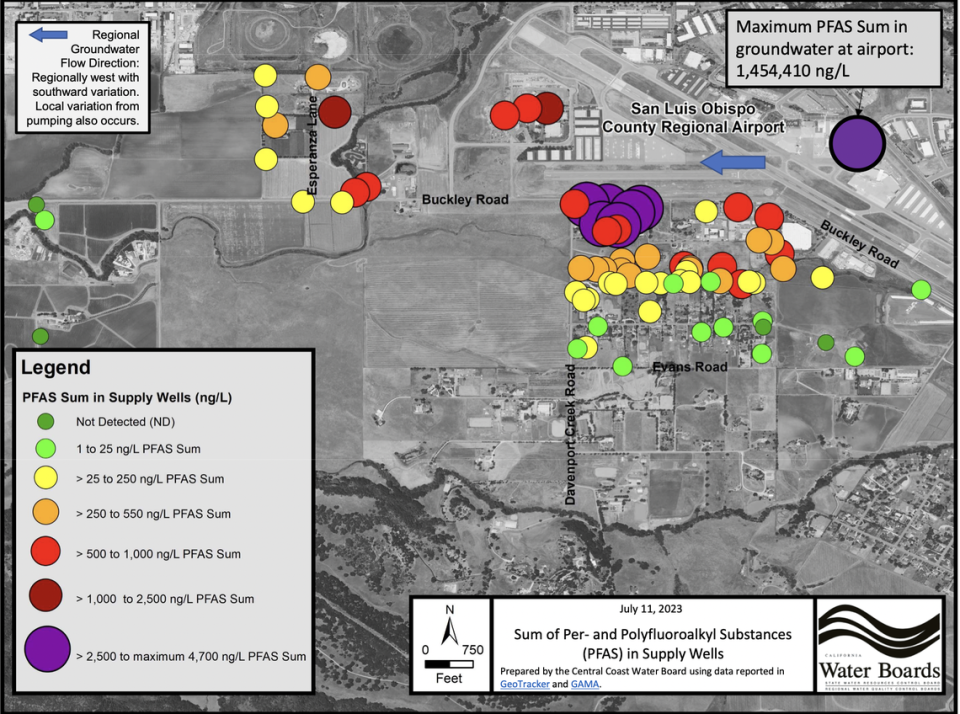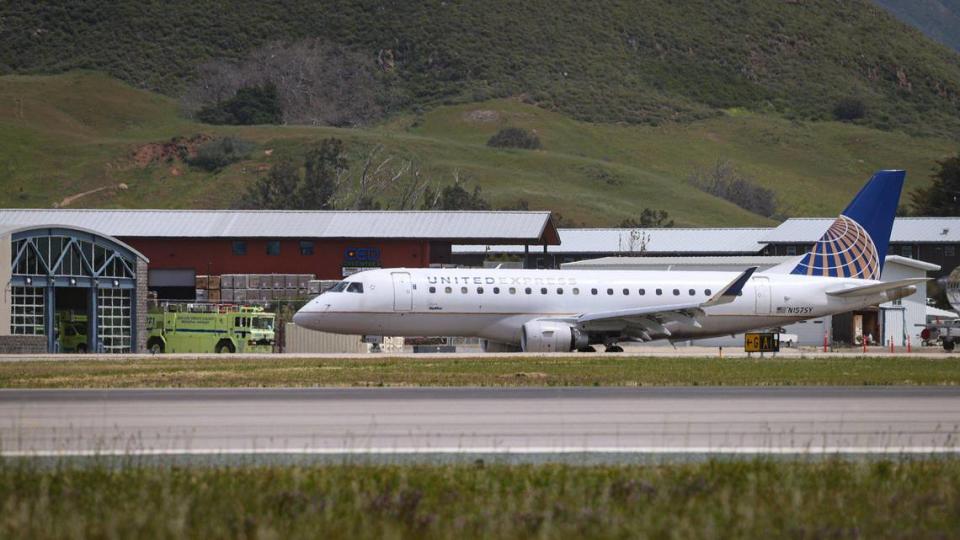SLO County, Cal Fire agree to clean up toxic airport pollution. What you need to know
Toxic chemicals seeping under homes and businesses from the San Luis Obispo County Regional Airport could be cleaned up within the next few years under a new voluntary agreement issued by the local water quality control board.
The agreement was ratified on Friday by the Central Coast Regional Water Quality Control Board.
Under the agreement, San Luis Obispo County, which owns the airport, and Cal Fire, which used toxic firefighting foam at the facility, must submit a plan to the water board by July 21, 2026.
That plan should outline how per- and polyfluorinated substances, or PFAS, could be removed from the soil, groundwater and indoor air around the airport.

Toxic chemicals found at SLO airport
Since the 1970s, firefighters at the airport have trained for potential airplane crashes using a specially designed fire suppressant — aqueous film-forming foam — that contains PFAS.
The substances, which accumulate over time in the human body, have been found cause a host of health impacts including cancer, liver damage, decreased fertility, increased cholesterol levels and decreased vaccine response in children, according to the U.S. Agency for Toxic Substances and Disease Registry.
A large plume of PFAS chemical pollution leaking from the San Luis Obispo airport property was discovered after a 2019 investigation by the three parties.
PFOS, a type of PFAS, were found in groundwater at the airport at levels of 130,000 parts per trillion, or 32,500 times greater than the U.S. Environmental Protection Agency’s proposed maximum level for drinking water, according to data from the regional water control board.
And about 93,000 parts per trillion of PFOA, a second type of PFAS, was found at the airport property — 12,500 times above the EPA’s proposed limit, data from the water board show.
Additionally, 42 residential wells in a neighborhood southwest of the airport have been contaminated with PFAS above healthy levels, according to the water board.
Residents exposed to toxic chemicals in drinking water
The water board’s agreement with the county and Cal Fire signifies the possible end to the pollution problem plaguing the rural, unincorporated neighborhood around Buckley Road.
Residents there have known their drinking water wells were contaminated with an industrial chemical, TCE, since the late 1990s.
The local water board and neighboring communities were first made aware of the PFAS contamination in 2022.
The more recent discovery of PFAS in their drinking water has only added to concerns that the water they self-pump from the ground is unsafe.
“We moved here in 2006 and we have raised our children here, drinking this water for more than a decade with these forever chemicals in our water all this time,” area resident Cathy Moore wrote in a letter to the water board in response to the voluntary cleanup agreement with the county and Cal Fire.
Some residents have told the water board of their severe, and sometimes quite rare, health conditions they wonder could be connected to the contaminated water.
At Friday’s board meeting, Dawn Surois, who’s lived near Buckley Road for 50 years, said she recently sought medical treatment for a kidney tumor that she believes was related to consuming PFAS in her drinking water.
Kathy Borland, another area resident for 40 years, said that she experienced an unusual liver ailment that she also believes was related to PFAS exposure.

Water board ratifies cleanup agreement
The voluntary cleanup agreement ratified on Friday outlines several steps the county and Cal Fire must take to further ensure residents are safe, while also planning for the potential remediation of the polluted area.
Typically the local water board issues a cleanup and abatement order to ensure that pollution impacting groundwater is removed.
In the case of the airport PFAS, the county and Cal Fire threatened legal action should they be ordered to cleanup the pollution. They argued there’s a chance the federal government could be found liable for causing the pollution because it mandates the use of the toxic fire fighting foam during training activities at the airport.
So, to avoid any legal challenge, the water board agreed to enter into a non-legally binding voluntary agreement. Water board staff have ensured the document is enforceable and the agency could issue a cleanup and abatement order if necessary.
The first course of action the county and Cal Fire must undertake through the agreement is to ensure, within 30 days from Friday, all residents have so-called “point of use” drinking water PFAS treatment systems.
A filtration system under the kitchen sink of a home would satisfy this requirement of the agreement.
At Friday’s meeting, San Luis Obispo County director of airports Courtney Johnson said that most homes already have “point of use” systems in place.
Many residents paid to install their own water filtering systems after being made aware of the high levels of PFAS in their water in 2022.
The water board on Friday made an agreement with Cal Fire and SLO County to further discuss reimbursing the residents for those costs.

Safety concerns of local agriculture
Residents with polluted groundwater raised red flags at the “point of use” requirement before the Friday meeting, saying that point of use filtration only works for one area of the home.
Residents could still be showering, brushing teeth and watering plants with PFAS-contaminated water, they said in letters to the water board.
“Anything short of treatment at the wellhead is unacceptable as the proposed solution fails to address the contamination of water used for dental hygiene, irrigation for fruit/vegetable crops as well as untreated groundwater ingested by pets/livestock,” impacted residents Rebecca and Thomas Amato wrote in a letter to the water board before Friday’s meeting.
Paul Reece, a 40-year resident of the Buckley Road area, brought homegrown tomatoes to Friday’s meeting.
“I moved to this area to grow crops for our use and to share with others,” Reece said. “I don’t know if I should share these anymore.”
Within 90 days from Friday, the county and Cal Fire must submit to the water board a plan for “point of entry” PFAS treatment systems on contaminated wells. The plan must outline how affected residents’ wells could be outfitted with PFAS treatment systems, according to the agreement.
Another 180 days after the point of entry treatment plan is submitted, the county and Cal Fire must implement the point of entry wellhead treatment system plan. The plan must be completed by July 21, 2024, according to the agreement.
Meanwhile, the county and Cal Fire must also evaluate the feasibility of removing the pollution.
A plan to remediate the PAS-contaminated groundwater, soil and air must be submitted to the water board within three years from Friday, according to the agreement.
Also within those three years the county and Cal Fire must submit an evaluation of long-term water supply alternatives in the event that cleaning up the PFAS pollution is not possible. Those water supply alternatives could include hooking residents up to an existing public water system or a new standalone water system, according to the agreement.
Residents and members of the water board were also concerned that the agreement, which is due to end on July 21, 2026, would not continue long-term.
“We need to take human cost into account,” Reece said. “It is our obligation to protect future generations.”

Toxic foam only used in emergencies
At Friday’s meeting, Cal Fire Deputy Chief John Owens said that fire-suppressant foam containing PFAs is now being used in a “closed capacity” for training and testing, meaning that the foam is no longer being distributed as it was prior to the PFAS investigation.
The only exception when the foam is used in an open capacity would be during a real-life emergency aircraft situation, Owens said.
According to Owens, the airport is required by the Federal Aviation Administration to use firefighting foams. However, he said, the U.S. Department of Defense is currently developing a replacement to aqueous film-forming foam.
“We have been exposed to PFAS ourselves and want to mitigate this exposure for our own employees,” Owens said.

